Camino de Santiago | Phase 1 – September 2006 | St. Jean de-Pied-Port – Puente la Reina
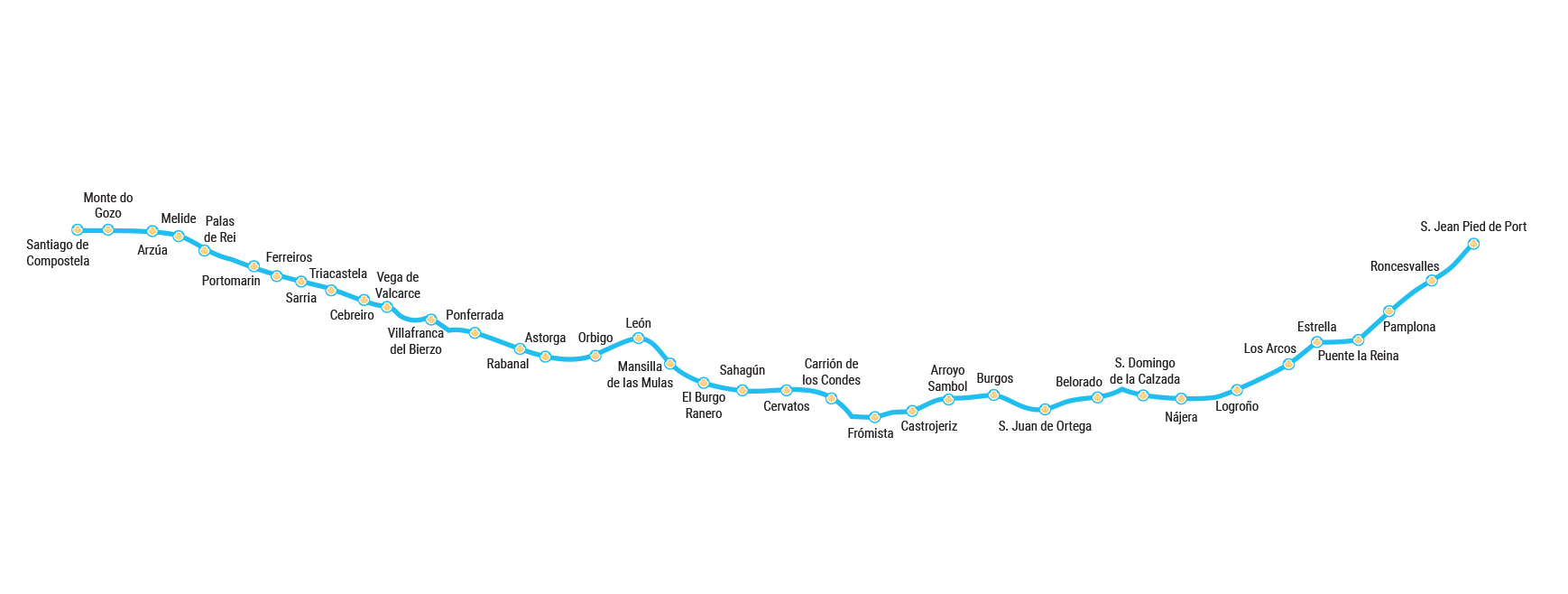
I returned to the way that I traveled on foot 16 years ago. The way of the stars that took me through forests, plains, rivers and churches all the way to Santiago de Compostela. I decided to go back there with my paintings because I wanted my work to return to the source of its spirituality, the stones trodden by centuries of pilgrims, the faith-flooded plains.
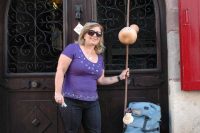
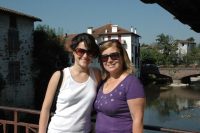
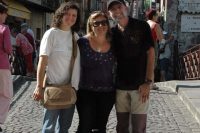
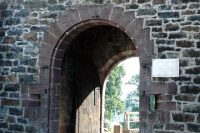
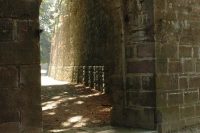
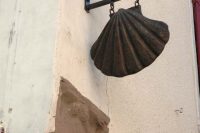
First day of the Camino: St. Jean-Pied-de-Port, the last city before the climb up the Col de Roncesvalles. My niece and I had arrived the day before, the 5th of September, to meet up the next day with Acácio and Orietta, friends and hosts of the Camino de Santiago. They came to help us not only to “plant” my canvases in the sacred ground but also to guide us with their stories and legends. In this border town, shimmering colorfully in the Pyrenees, we decided to follow the footsteps of the pilgrims, men and women who at each step catch a glimpse of the skies and pass through portals. And so we entered through the gate of Santiago that takes us to the church of Our Lady of the End of the Bridge. I wanted to stay alone with my friends on this sunny day before carrying my partially painted canvases to the top of the mountains. I wanted to complement them on the mountains because I knew that there on high I would feel inspired.
We climbed the Pyrenees by the most difficult route, which gave us a marvelous view of the whole valley. We were presented with a rare vision of the sun with all its glory bathing in light the mountains that were nearly always covered in clouds. And so we saw the naked mountains offering their sinuous and sensual shapes to the deep-blue sky. Reaching the highest point, there we found among a sea of stones a Madonna with the Baby Jesus with His arms open.
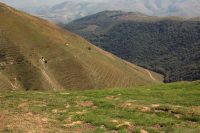
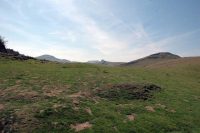
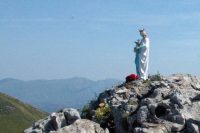
I chose the spot that the pilgrims call “the hand that touches the sky”. The reason is simple: at these heights, after climbing the steep mountain paths, the pilgrims have the impression that they are touching the sky. Taking my work to the forests and mountains is not a gratuitous act: mine is a pilgrim’s work, it leaves the four walls of the studio and the Way to Santiago is the best place for it. I always thought of the Way when I began to put my paintings in the far-off lands of India and virgin forests of the Amazon. Now the energy of that land will imprint its visible and invisible marks on the canvases. I took four paintings of a series I developed some time ago inspired by telephone cards. The symbols of the mouth and heart have already kissed other continents and I wanted them to come and impregnate the Way.
So this time the symbols of the Way came as a complement: I drew a series of shells, the symbol of the Way. I used as a stamp a shell that I bought in Saint Jean Pied de Port. In another painting I drew the silhouette of the shell, and to the third painting I attached the golden shell itself. The fourth and last painting I decided to dedicate to the Virgin, the feminine energy that has always guided me in my creative work. While drawing, I realized that the Virgin, the Goddess, is omnipresent, even though the Way is essentially masculine, a rough road that imposes on the dreamer the destiny of his dreams. So I made a blue crown and used a golden powder to represent the Milky Way, the arched vault of light that has always guided the pilgrims. In this place of prayer and contemplation I left my first works of the Way. Works that kiss the sky.
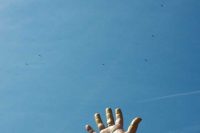
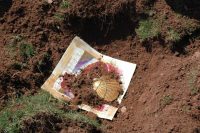
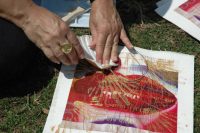
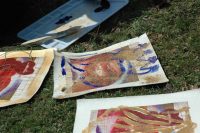
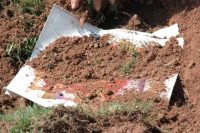
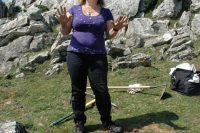

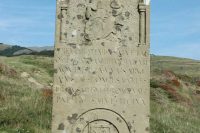
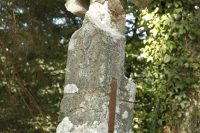
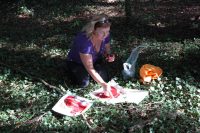
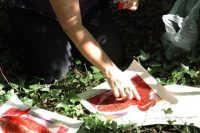
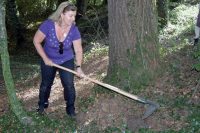
We came down from the mountains to Roncesvalles in the direction of the Spanish border. We saw a crowd, which is something out of the ordinary, and were told that it was the feast day of Our Lady of Roncesvalles. I would like to bury my work in that place too, which brought back so many memories of my first pilgrimage. What a joy to see the cross on the church in Roncesvalles – actually a pilgrim’s crook transformed into a cross!
Just 300 meters south of Roncesvalles on the road that leads to Burguete, we stopped in front of the pilgrim’s cross, a wooden cross that dates from the 16th century, ornate with the statue of the Virgin. There in the forest I felt a strong presence telling me that my work could be planted in that bed of leaves. I chose another four mouths and complemented them with the cross of Santiago, the warrior symbol that allies cross and sword. The winds carried to us the slow ringing of the bells of the church of Our Lady of Roncesvalles. We prayed and from there we headed for Puente la Reina, the town in Navarra where all the roads to Santiago converge. We reached the El Peregrino hotel, took a well-deserved bath and chatted with our guidehost Ângelo, who offered me his gallery to show my paintings to the pilgrims next year.

